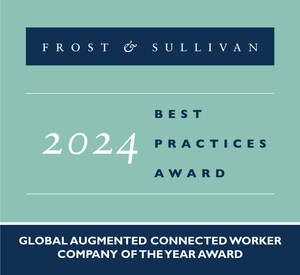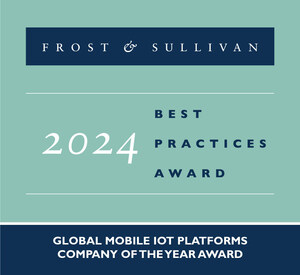Frost & Sullivan: Building Automation Systems Multiply with the Global Urge for Energy Efficiency
Buildings across the globe account for nearly 40 percent of worldwide energy consumption and cumulatively emit high levels of carbon dioxide
SANTA CLARA, Calif., Feb. 9, 2018 /PRNewswire/ -- Frost & Sullivan's latest analysis, World Building Automation Systems (BAS) Markets, Forecast to 2022, sheds light on the rapid transformations taking place in the global BAS market. Factors propelling change include the growing use of Internet of Things (IoT), rising popularity of energy-efficient LED lights, increasing reliance on wireless technologies, and concern for overall building energy consumption. The convergence and integration of security and surveillance with BAS is also highlighted as the significance of building security continues to rise.
For further information on this analysis, please visit: http://frost.ly/265
"Cutting-edge technologies involving IoT, Big Data, and cloud platforms have made it convenient to gather and normalize data from buildings to help analyze the energy usage trends and facilitate fault detection and monitoring of the overall building energy performance," said Frost & Sullivan Research Manager Suba Arunkumar. "However, these technology advancements will only thrive if suppliers can develop security features strong enough to offset customer fears about hacking or system failure."
Key takeaways include:
- The BAS market is expected to grow at a compound annual growth rate (CAGR) of 4.3 percent between 2016 and 2022;
- IoT-enable devices will open new opportunities such as voice-over technology in the building automation industry;
- Buildings account for nearly 40 percent of global energy consumption, making energy efficiency in buildings a critical driver of BAS;
- Rapid expansion in data centres due to strong internet penetration in emerging nations and new cloud offerings;
- Global rise boosted by construction of shopping malls in parts of Asia-Pacific and Europe, as well as public buildings in the Middle East;
- Additional BAS development in core renovation of public buildings in North America, parts of Europe, and Africa, as well as in educational buildings in Europe and North America;
- Increase of multi-purpose projects such as office buildings, retail buildings, hotels, restaurants, and residential buildings.
"Government policies and regulations will remain critical to keeping the momentum behind advancements in this market," concluded Arunkumar. "In spite of the exciting innovation around technology and new business models, the main driver of progress will be policy and regulation on building management and energy efficiency."
World Building Automation Systems (BAS) Markets, Forecast to 2022 is part of Frost & Sullivan's Homes & Buildings Growth Partnership Service program.
About Frost & Sullivan
Frost & Sullivan, the Growth Partnership Company, works in collaboration with clients to leverage visionary innovation that addresses the global challenges and related growth opportunities that will make or break today's market participants. For more than 50 years, we have been developing growth strategies for the global 1000, emerging businesses, the public sector and the investment community. Contact us: Start the discussion
World Building Automation Systems (BAS) Markets, Forecast to 2022
MD07_19
Contact:
Jaylon Brinkley
Corporate Communications – North America
P: 210.247.2481
F: 210.348.1003
E: [email protected]





Share this article